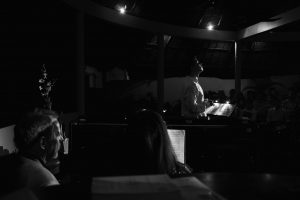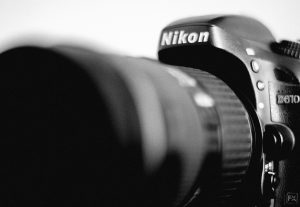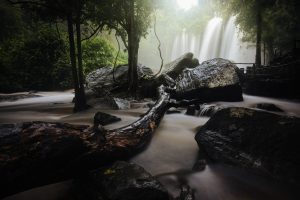Shadow detail, use it or lose it!
When it comes to shadow detail, less is often more. Now I appreciate I’ve probably already caused a few gasps, and you HDR-fans are reaching for the back button, but bear with me; deliberately sacrificing shadow detail was one of my hardest learned lessons, but is something that I believe has propelled the quality and mood of my images to new heights. Let me explain…
A couple of years ago, when I (wrongly) decided I’d just about figured out the direction I was going as a photographer, I took some time to review my photography from the preceding years, right from the point I first picked up my first DSLR back in December 2012. My goal was to identify and re-touch the images I thought had the potential to become portfolio shots despite some poor post-processing at first instance. I overhauled a good deal of my Lightroom catalog, figuring that my new-found editing skills would have the images looking their best, and that’d be that – I’d never have to touch them again.
Right now I’m in the process of putting together a book of photographs from my time in South Korea, and so it’s been necessary to delve into the darkest recesses of my archives to select the images that will be used in the book. Imagine my horror, then, when I dig out those images I RE-processed only a couple of years back to find they were hardly screaming “pick me!” as I hovered over them. I even considered bashing the side of my monitor to fix the problem that it was clearly suffering from at that moment in time. As it turns out, my monitor was showing colours perfectly accurately…
As a general rule of thumb, photographers tend to draw attention to only their best work. Perhaps a few of you will think I’m a little mad in sharing some of my worst today, but the point I want to make is that we are constantly developing and evolving as photographers, especially when it comes to style and taste in imagery. I’m also going to be sharing the steps I took to reach my current state of development in the hope that it will help a few of you to speed up the process of finding your feet in an industry where it seems the learning curve is never-ending.
Some examples
[twentytwenty]


[/twentytwenty]
This is an image I shot in the Wolchulsan National Park back in May 2014. My girlfriend and I had hiked into the Park a little before sunset the previous day, spending the night on the mountain to give ourselves the most privileged views of the sprawling ridgelines and valleys pooled with mist as the sun rose the next morning. As my alarm rang out and I climbed out of our tent, I was met with the scene you see above. When I processed the shot at home a few days later, I told myself I’d captured the exact experience I was having, yet when I look at the old edit now, I see a scene devoid of mood or atmosphere. It was hard not to be taken aback by how breathtaking the view was, but that just didn’t shine through in the old edit. I tried to rework it a number of times over the years; it took me forever to identify the fault in my workflow: I was afraid of the dark – my refusal to let minute details of a photograph be hidden in the darkness was what was crippling the mood in my shots. When it comes to shadow detail, less is more.
[twentytwenty]


[/twentytwenty]
While I’m not as fond of this shot as my Wolchulsan sunrise, I wanted to use it to further illustrate my point about sacrificing shadow detail in lieu of mood. The above image is a single exposure, yet the original, older edit has this sort of tone-mapped, heavy-HDR look that I had never intended, caused unintentionally by over-brightening of the shadow tones. In the newer edit, I was happy to let unimportant shadow detail take a back seat, retaining the mood of the scene. I recently re-worked this shot for a series on Somaemuldo in Black and White; the result is a contrasty black and white, complete with shadows, showing form perfectly throughout the scene. You just couldn’t have seen the shapeliness of those rugged islands in the original shot where everything had essentially become a midtone.
Why the change?
So what inspired the change in attitude towards shadow detail in my imagery?
I think one of the biggest differences is that I now have a vision as to what I’d like a photograph to look like at the point of capture; my vision is now experiential, rather than about showing a scene’s every eye-bleeding detail. I identify at the time of shooting which of a scene’s details form part of my vision, which contribute to it, which detract from it. As I’m standing there with the camera, I’ve even begun to think about how I’ll process the image to match my experience; if that means some of the darker tones are lost, so be it. When shooting from the top of Wolchulsan, I wasn’t drawn to the towns and roads I brightened up in the original. My Somaemuldo shoot didn’t have me staring at every individual leaf in the shaded trees. Why would I process in such a way that enhances these extraneous features? They detract from my experience and thus ultimately my vision.
In fact I’m generally now only drawn to photograph the kind of things I know are going to match my vision, my style as a photographer. I find that developing as a photographer is made all the more easy when you have a decent sense of purpose, direction, and most importantly a vision for the kind of images you want to produce. I’ll wander into a scene now and think, “I know a lot of people who would appreciate this, but it just isn’t the kind of thing I photograph.” Resisting the urge to make photos you know others will like, rather than shooting for me, was one the hardest lessons I had to learn along the way. Don’t get me wrong, when I’m on assignments or client shoots, I’m making the kind of images I’m paid to make – the customer is always right and all that jazz, though they probably at least like my style (hence the assignment) – but my personal work is exactly that, personal. I shoot and process the way I want to, inline with my vision. Those of you who follow my most recent work will probably notice I’m drifting into darker, moodier photography both in terms of post-processing but also the subject matter I’m drawn towards. Some people won’t like it; I’m okay with that. I feel that by shooting and processing in a way that is true to how I see the world is helping to produce my best work yet. I still have a lot of work to do in refining my vision, but since I’ve begun to at least define the foundations, I feel I’ve really pushed on as a creative.





